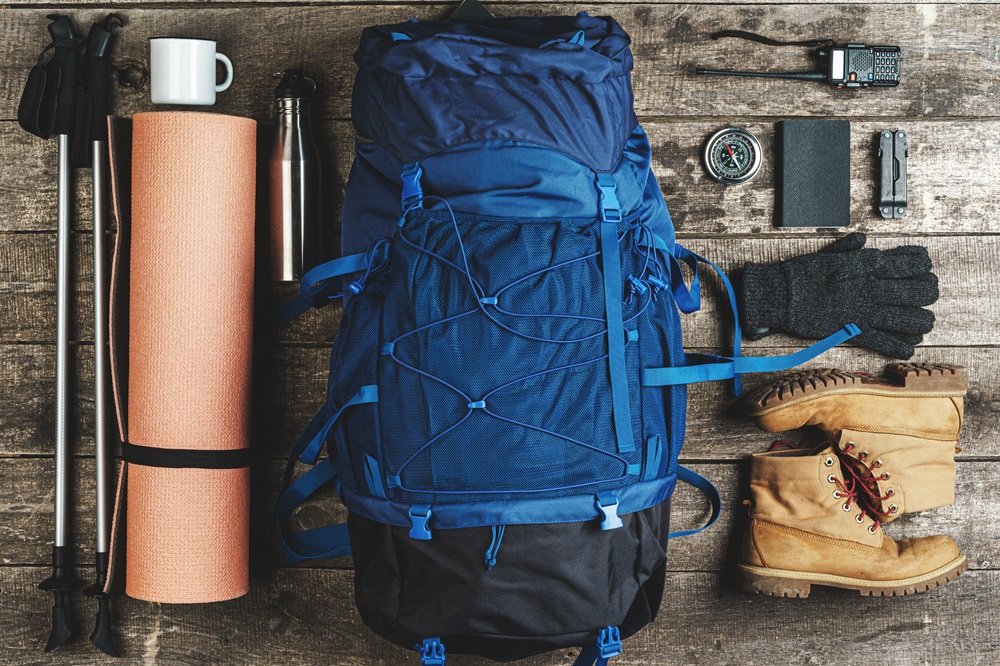When hunting for used outdoor gear, you’re looking for equipment that delivers value without draining your wallet.
But how do you know if that seemingly perfect second-hand backpack has underlying problems? The pre-owned adventure gear market can be full of hidden issues that might not show up during a quick look.
Many outdoor enthusiasts turn to used gear to save money or reduce environmental impact. Yet without knowing what to check, you might end up with equipment that fails when you need it most – halfway up a mountain or deep in the wilderness.
Common Hiding Spots for Damage in Used Adventure Gear
Not all wear and tear is visible at first glance. Sellers might not even know about some problems, especially if they bought the gear second-hand themselves.
Backpacks and Bags
The backbone of any adventure is your pack. When examining used backpacks, check these often-overlooked areas:
- Seam integrity: Look where shoulder straps connect to the main body. Loose threads here can mean imminent failure.
- Waterproofing deterioration: Pour a small amount of water on the bottom to see if it beads up or soaks in.
- Zipper alignment: Run zippers fully open and closed several times – they should move smoothly without catching.
Tents and Shelters
A tent with hidden damage can leave you exposed to the elements. Pay special attention to:
Tent floor corners where abrasion happens most. Hold the material up to light to spot thin patches that might tear easily.
UV damage is often missed but can severely weaken tent fabrics. Look for fading or brittle-feeling material, especially on rainflies.
Sleeping Bags and Pads
Your sleep system keeps you warm and comfortable. Before buying used sleeping gear:
Compress the insulation between your fingers in multiple spots. If it doesn’t spring back quickly, the insulation might be damaged.
Check zipper tracks for bent or missing teeth that could cause midnight frustration.
Technical Inspection Checklist
Here’s a handy table of what to examine on different gear types:
| Gear Type | Primary Checkpoints | Secondary Checkpoints |
| Backpacks | Strap attachment points, Frame integrity, Hipbelt connection | Hydration ports, Interior coating, Compression strap function |
| Tents | Pole stress points, Seam taping, Guyline attachment points | Stake loops, Door zippers, Ventilation mesh |
| Footwear | Midsole compression, Outsole wear pattern, Heel counter stability | Waterproof membrane function, Lace hooks, Insole condition |
The Smell Test: More Than Just Odor
While checking used outdoor gear, don’t underestimate your nose. Unusual smells can reveal:
- Mold or mildew that could spread to your other gear
- Chemical damage from improper cleaning or storage
- Storage in smoking environments which can degrade materials
The smell of mildew is particularly concerning for tents and sleeping bags, as it suggests they were stored wet – a major lifespan reducer for outdoor equipment.
Electronic Components: The Hidden Vulnerability
Modern adventure gear often includes electronic elements. These components hide their damage better than physical parts:
Water damage indicators inside battery compartments often change color when exposed to moisture.
Button responsiveness can indicate how well electronics have been treated. Sticky or unresponsive buttons suggest internal issues.

Making Your Purchase Decision
When evaluating used outdoor gear, remember that some damage is fixable, while other problems mean walking away. If a backpack has a torn mesh pocket but solid structural components, you might negotiate a lower price and make an easy repair.
Trust your instincts. If something feels off about the gear’s condition or the seller’s description, it probably is. The money you save on used gear isn’t worth compromising your safety or comfort outdoors.
The Long View: Value vs. Price
Quality used adventure gear should give you many seasons of reliable use. Factor potential repair costs into your purchasing decision – sometimes paying a bit more upfront for better-condition gear saves money in the long run.
Remember that checking for hidden damage in used outdoor gear isn’t just about avoiding bad purchases – it’s about ensuring your adventures stay adventures, not survival situations.
Q&A
What kind of damage should I look for in a used backpack that might not be obvious?
Answer:
- Strap connection points: Look closely where straps attach to the main body – hidden thread damage is a failure risk.
- Zippers: Run all zippers multiple times; any sticking, gaps, or misalignment could mean trouble on the trail.
- Waterproofing: Drip water on the bottom or inside. If it soaks in, the coating may be compromised.
How can I tell if a used tent has UV damage or is structurally weak?
Answer:
- Fabric fading or brittleness, especially on the rainfly, is a sign of UV degradation.
- Hold the tent floor and corners up to light—thin or worn spots could tear in harsh weather.
- Inspect seams and pole sleeves—look for stress marks or flaking seam tape.
What’s the best way to check if a sleeping bag still insulates well?
Answer:
- Compress different areas with your fingers—if the loft doesn’t bounce back quickly, insulation is likely degraded.
- Smell it—musty or moldy odors suggest it’s been stored wet, which breaks down fill and invites mildew.
How can I know if old waterproof coatings on gear like backpacks or tents still work?
Answer:
- Pour a small amount of water on the fabric and see if it beads or soaks in.
- Look for cracking, peeling, or flaking coatings inside the pack or tent floor—that’s a clear sign it’s worn out.
Can I safely buy used hiking boots or should I avoid them?
Answer:
You can, but inspect carefully:
- Midsole compression: Press on the arch to check if the midsole is flattened or hardened.
- Outsole wear pattern: Uneven wear can cause discomfort or injury.
- Heel and toe structure: Squeeze to check for stability.
Waterproofing: Water test or ask if they’ve ever been re-treated.


